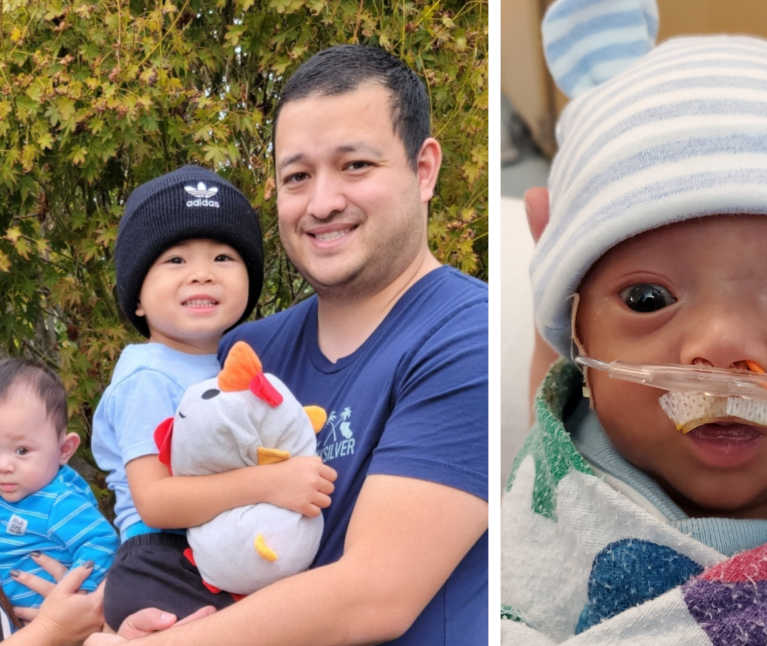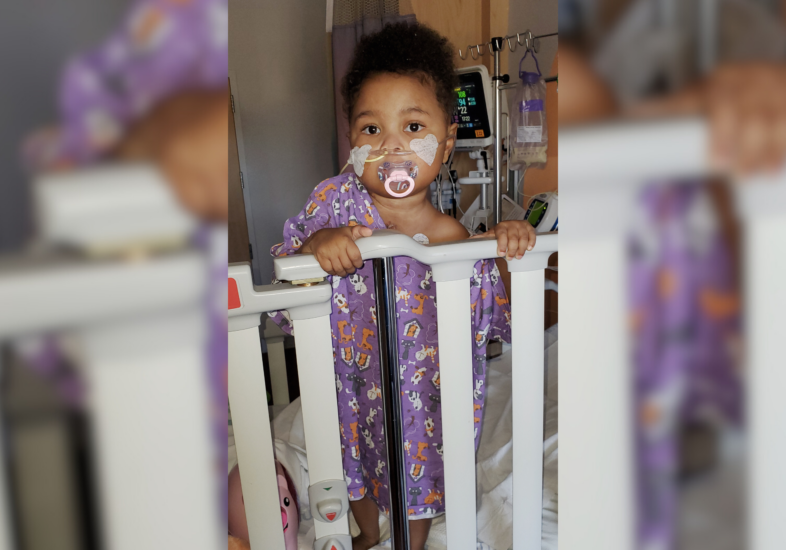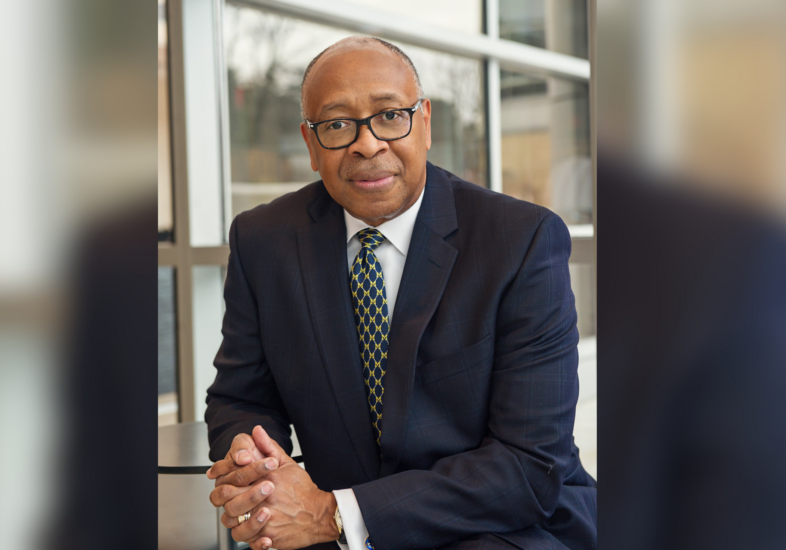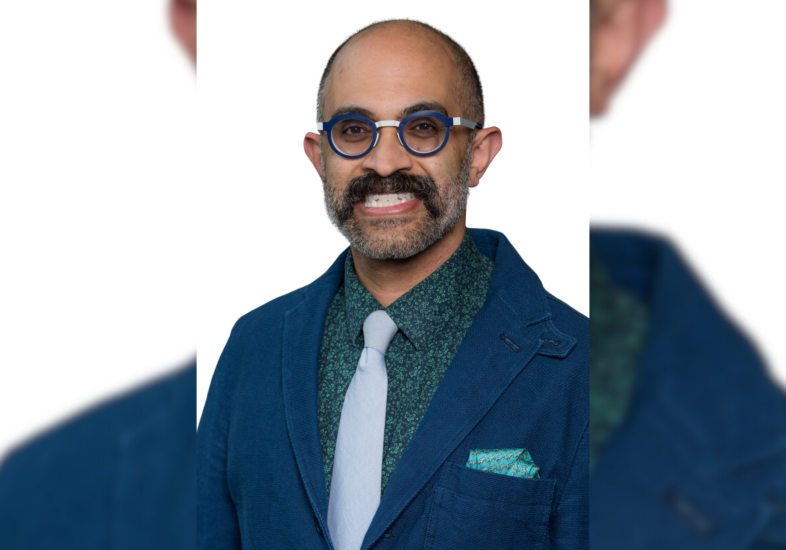Micro-Preemie Overcomes Huge Health Obstacles
Emmett Watanabe has come so far since the odds were stacked against him. He was born with a heart defect and weighed less than 1.5 pounds. Lucile Packard Children’s Hospital provided the collaborative care that Emmett and his mom, Yatine, needed before, during, and after his birth.
At 19 weeks in pregnancy, Emmett’s parents learned that he had a congenital heart defect called tetralogy of Fallot. He also had intrauterine growth restriction and wasn’t growing as expected. Doctors needed to keep him in the womb for as long as possible.
The pregnancy lasted 27 weeks, and Emmett was born prematurely by cesarean section. Within his first two weeks of life, Emmett underwent surgery to correct intestinal and bowel problems. In addition, doctors put a stent across his narrow pulmonary valve, opening a pathway to get blood to his lungs. His only chance at survival, the stent was less than a centimeter long and just a few millimeters in diameter. Later, Emmett had two more surgeries to place larger stents as he grew.
When Emmett was 8 pounds and 4 months old, he was ready for open-heart surgery. The operation required customized methods for removing the stent and rebuilding areas of Emmett’s heart. Four months later, Emmett was finally able to go home. In total, he had spent his first eight months in the hospital.
Emmett recently turned 1 and is now caught up on developmental milestones. “Everyone was so invested in Emmett. We are so grateful for their bravery and willingness to give Emmett a fighting chance,” says Yatine of our hospital’s staff.
Patient Thrives After Two-in-One Operation
At the tender age of 2, Santana Renchie is sassy, joyful, and determined to not miss a single moment of fun. That wasn’t the case until last August, when she underwent a nearly 16-hour, life-saving surgery at Lucile Packard Children’s Hospital—one that has never been performed elsewhere.
Santana was born with two complex conditions—a single ventricle heart defect and diffuse pulmonary artery stenosis. She had just one pumping chamber in her heart, rather than two, making it difficult for blood to flow from her heart to the lungs. Her stenosis—a narrowing of the pulmonary artery—further decreased blood flow.
Doctors believed that performing two surgeries at once—both a heart transplant and a pulmonary artery reconstruction (PAR)—was her best option. “A deep expertise in heart transplant and PAR, coupled with an incredible spirit of collaboration, allows us to think outside the box,” says Chiu-Yu Chen, MD, a pediatric cardiologist.
The big day came on August 19, 2021, after a three-month hospital stay for Santana. The two-in-one procedure or “PARplant” went smoothly, performed by Elisabeth Martin, MD, pediatric cardiovascular surgeon.
Santana recovered well and follow-up studies showed no narrowing of her pulmonary arteries. Eventually, the family returned home to Dallas. Today, Santana plays games with her family, snuggles with mom, Tamela, and dances around the house. “It is like night and day. She has so much energy now,” says Sebron, her dad.
Girls and Boys with Autism Have Brain Differences
Depending on their gender, children with autism have distinct brain patterns that underlie differences in their symptoms, according to research from the Stanford University School of Medicine.
The study, which used artificial intelligence techniques on 773 MRI brain scans of children with autism, helps explain why symptoms differ between the sexes and may pave the way to better diagnostics and treatments for girls. Girls with autism are often overlooked because the condition is diagnosed in boys four times more than in girls and most autism research has focused on males.
“When a condition is described in a biased way, the diagnostic methods are biased,” says the study’s lead author, Kaustubh Supekar, PhD, clinical assistant professor of psychiatry and behavioral sciences. “This study suggests we need to think differently.”
Girls with autism generally have fewer overt repetitive behaviors than boys, which may contribute to diagnostic delays. Females had different patterns of connectivity than males did in several brain centers, including motor, language, and visuospatial attention systems.
“If the treatments can be done at the right time, it makes a big, big difference. For instance, children on the autism spectrum receiving early language intervention will have a better chance of developing language like everyone else and won’t have to keep playing catch-up as they grow up,” says Lawrence Fung, MD, PhD, assistant professor of psychiatry and behavioral sciences, who was not an author of the study.
Packard Children’s CEO Named Chair of Children’s Hospital Association
Paul A. King, president and CEO of Lucile Packard Children’s Hospital and Stanford Children’s Health, was elected chair of the board of trustees of the Children’s Hospital Association (CHA) on January 1.
King’s leadership of CHA’s board coincides with the organization’s focus on multiyear priorities, including combating the mental health emergency among children and adolescents; innovating quality of health care delivery; advocating for policies to support the capacity and viability of children’s hospitals; and building greater health equity for children.
After two years of battling COVID-19, “our nation’s children are at a pivotal point,” says King. “We must do everything in our power to ensure they feel protected and supported by advancing and implementing health care solutions and policies for their long-term health and well-being.”
King’s election puts him at the helm of the organization that represents more than 220 children’s hospitals nationwide.
Unlocking Philanthropy in Child and Maternal Health
Cynthia J. Brandt, PhD, president and CEO of the Lucile Packard Foundation for Children’s Health, was recently featured on “The Big Unlock,” a podcast on digital transformation in health care. In her interview with host Paddy Padmanabhan, Brandt shared her passion for giving back and leading the Foundation in unlocking philanthropy to transform health for children and families everywhere.
“It’s my life’s work,” said Brandt, “to bring science to help humanity.”
Listen to the podcast at supportLPCH.org/bigunlock.
New Surgeon-in-Chief Appointed at Packard Children’s Hospital
Renowned pediatric otolaryngologist Karthik Balakrishnan, MD, MPH, was appointed as the new surgeon-in-chief at Lucile Packard Children’s Hospital as of February 1. Balakrishnan specializes in caring for children with complex disorders of the voice, breathing, and swallowing. He is an expert on surgical reconstruction of the voice box, windpipe, and other airway structures.
Balakrishnan joined the Stanford Department of Otolaryngology – Head and Neck Surgery and Packard Children’s Hospital faculty as associate professor in early 2020. In addition, he took on the role of medical director for surgical performance improvement—a key indicator in our hospital’s recent American College of Surgeons (ACS) pediatric surgical verification.
Balakrishnan follows James Dunn, MD, PhD, after five successful years in the surgeon-in-chief position.
Investment Executive Jonathan Coslet Joins Foundation Board
Jonathan Coslet has become a member of the board of directors of the Lucile Packard Foundation for Children’s Health. Coslet joined the Foundation’s board on January 1 as an ex
officio member, reflecting his leadership position as board chair of Lucile Packard Children’s Hospital and Stanford Children’s Health, which also began on January 1.
Coslet is vice chairman and senior partner of TPG Global. He brings decades of experience in private equity management to the Foundation, which raises funds for child and maternal health at Packard Children’s Hospital and the Stanford University School of Medicine.
Speediest DNA Sequencing Finds Answers in Mere Hours
The first Guinness World Record for the fastest DNA sequencing has been set by Stanford Medicine scientists and collaborators, through a method that is already helping some pediatric patients. The team developed a way to use DNA sequencing to diagnose rare genetic diseases in an average of eight hours—nearly unheard of in standard clinical care where results typically take weeks.
Over less than six months, the team sequenced the genomes of 12 patients, using new technologies for simultaneous sequencing and dataset crunching. “It really felt like we were approaching a new frontier,” says Euan Ashley, MB ChB, DPhil, professor of medicine, of genetics, and of biomedical data science at Stanford.
Sequencing is vital for diagnosing patients with diseases rooted in their DNA. Once doctors know the specific genetic mutation, they can tailor treatments accordingly. Fast diagnoses mean patients may need less time in critical care, require fewer tests, and recover more quickly.
The accelerated sequencing of blood was offered to patients at Stanford with undiagnosed illnesses. One beneficiary was Matthew Kunzman, a 13 year-old with inflammation of the heart. “In a matter of hours, sequencing data showed the condition was rooted in genetics,” adds Ashley.
With that information, Matthew was immediately put on a heart transplant list. He received his new heart 21 days later.





